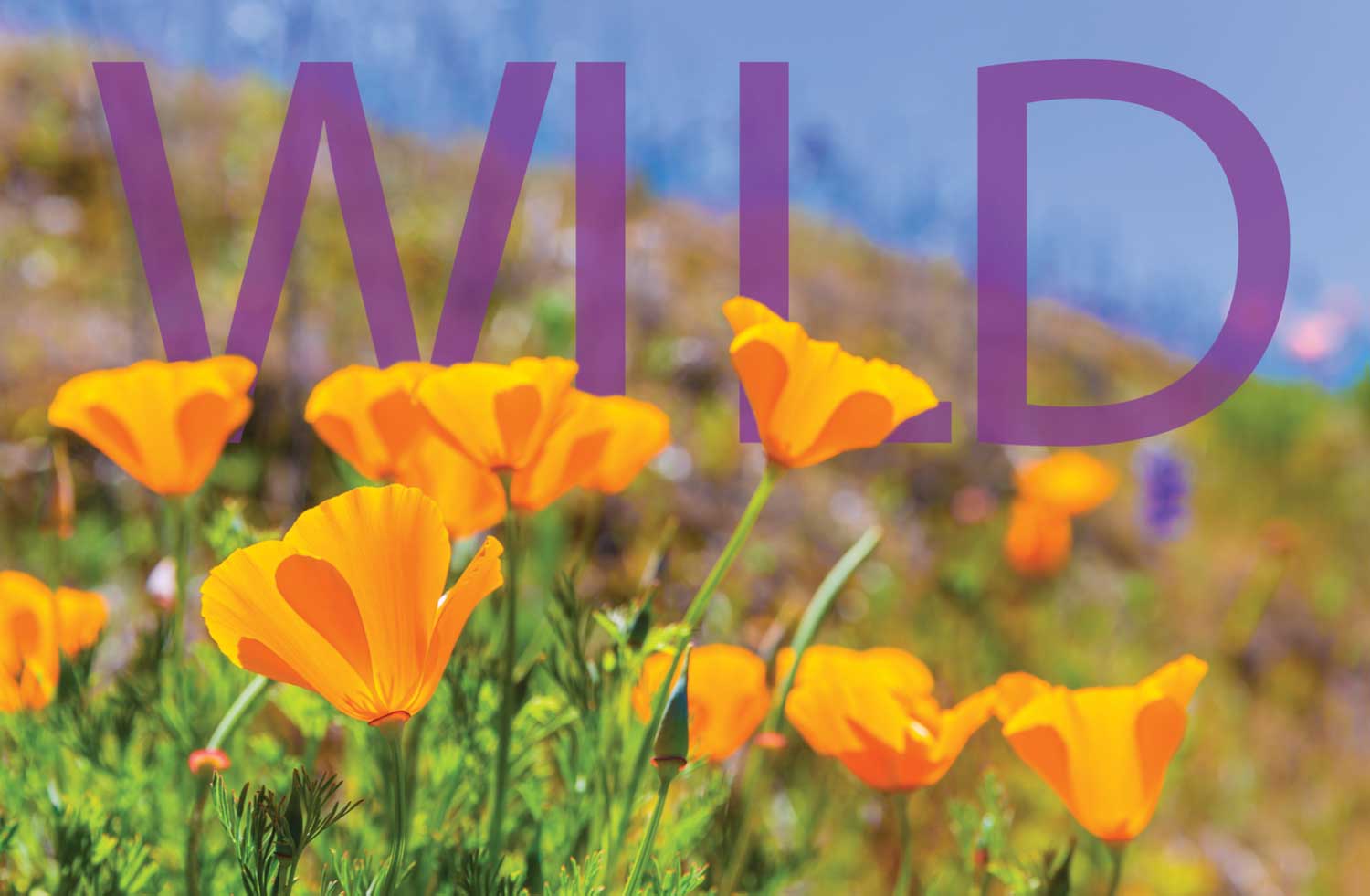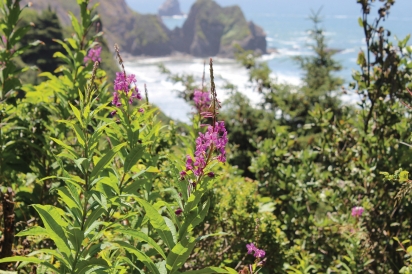Foraging in Southern California: Call of the Wild
In the beginning, all foods grew wild. Nothing was cultivated, processed, or genetically engineered. And prehistoric humans benefitted enormously from eating the natural edibles they gathered. On average, they consumed over one hundred different plant varietals a year. These plants provided great amounts of calcium and other micronutrients, helping to build strong bones and teeth. Our ancestors also ate less sugar in a year than the average person now eats in a day. Foods were gathered at the peak of freshness and, prior to eating, simply washed, peeled, cracked or possibly cooked over an open flame.
As humankind evolved into an agricultural society, cultivated varieties of plants were bred to be sweeter to cater to the contemporary palate. Fruits and vegetables continued to be cultivated for uniformity, durability during transport, and long shelf life; key concerns for producers. As a result of these objectives, what we lost was the high nutritional content that our original wild food sources contained.
The nutrients found in wild foods cannot be matched by their counterparts at the supermarket, or even the farmers market, conventional or organic. Studies have shown the TAC, or total antioxidant count, in wild fruits and vegetables are far and above what their cultivated cousins contain. This refers to nutrients such as polyphenols, carotenoids, chlorophylls, and ascorbic acid, which are so important to modern health because they fight free radicals in the body and have cancer-fighting properties.
Wild plants contain far more substantial amounts of these antioxidants. This isn’t just due to healthy soil, the absence of pesticides or other man-made interventions. In order for a plant to survive in the wild it needs to defend itself against the forces that threaten to harm it, such as fungi, viruses and bacteria. Antioxidants are the compounds a plant produces to protect it from environmental hazards. As these compounds serve to safeguard plants, contributing to their optimum health, when humans partake of the plant-based foods that contain them, the protective properties transfer over to benefit us as well.
Many people are interested in foraging wild foods because of these significant health benefits, but that is not the only draw. There is the diversity of plant life, the connection with nature, and best of all, the food is free. While some folks may just stop to enjoy some wild berries by the side of the road, others make a livelihood from foraging, picking for the expanding number of restaurants that increasingly feature wild foods on their menus. Indeed, many of these cannot be found in the produce section of your local supermarket.
The diverse topography of California, coupled with its temperate climate, make it ideal for foraging. Each bio-region contains foods native to its environment, though some plant species like to travel and often show up in other areas. While what is fresh will vary with the season, what you can expect are: mountain regions bountiful with nuts and greens and, if you’re lucky enough to find them in forests, wild mushrooms; fields abundant with edible flowers in season, the edges rimmed with berry and bramble bushes; seaside stretches where nutrient-dense seaweeds such as algae and other sea vegetables bide. The chaparrals’ manzanita provides berries and flowers, most of which can be eaten. Desert regions hold a plethora of edibles including palm dates and cactus fruits, although some taste better than others. Even urban areas have wild foods for the picking, from weedy lawns, coniferous and ornamental trees, the cracks of sidewalks and cacti, though it would behoove you to make certain your edibles have not been subject to pollutants or other toxins such as pesticides!
Foraging may be fun, free, and a source of nutritious, delicious fare, but there are definite protocols that should be followed. These are for the safety of the eater, the ecosystem that depends on the plant, and the plant itself, which needs to regenerate and grow. Furthermore, there are a host of laws in place to both guide and restrict who can pick which plants, and where. Though some may resent these regulations, they exist for those people who are unaware of the damage they may impinge on the environment, causing soil erosion and depleting food sources essential for native animal species. Foragers walk a fine line between the right to pick wild plants and the obligation to respect nature.
So, before you start out foraging for wild foods, make certain you go where you are welcome. Here are some loose guidelines, but the most prudent course of action is to ask before you pick.
1. Foraging is restricted in California state parks. Harvesting in state forests usually requires a permit. National forests generally allow small amounts of edibles to be harvested, but foraging in designated wilderness areas is prohibited. And, of course, trespassing on private property for any reason is illegal. The harvesting of marine aquatic plants, such as seaweed, comes with its own set of rules and regulations based on volume and region.
2. Learning how to forage properly is essential so that plant life is not destroyed in the process; here are a few rules of thumb:
- Experts advise to only take 1/7 of a plant so that it is able to rejuvenate, thrive and grow.
- Remember that it is not just about you, or the plant, but the entire bio-system of a region that is interwoven.
- Always have respect for the surrounding environment and leave it looking like it did when you entered.
- Take only what you need and don’t deplete natural resources. Always consider the equation of scarcity vs. abundance.
3. It is important to be well-educated on what is safe to eat, and the best way to learn is from an experienced forager!
Get informed. Take a class. Read up on the topic!
Never consume what you’re not sure of. There are poisonous plants that are easily confused with edible lookalikes, and vice-versa, so if in doubt, go without.
Pick only what you will eat, and only eat what you know.
Avoid any plant that looks contaminated, by animal droppings, pollution, dirty water runoff, etc. Never eat anything rotting or with foreign growth.
From the commonplace to the truly unique, one person’s weed can be another’s vittles. The next time you go out for a hike, you can come home with a veritable feast. All you need to do is look. Happy hunting.
A wonderful guide to California wild foods is Foraging California by Christopher Nyerges.






